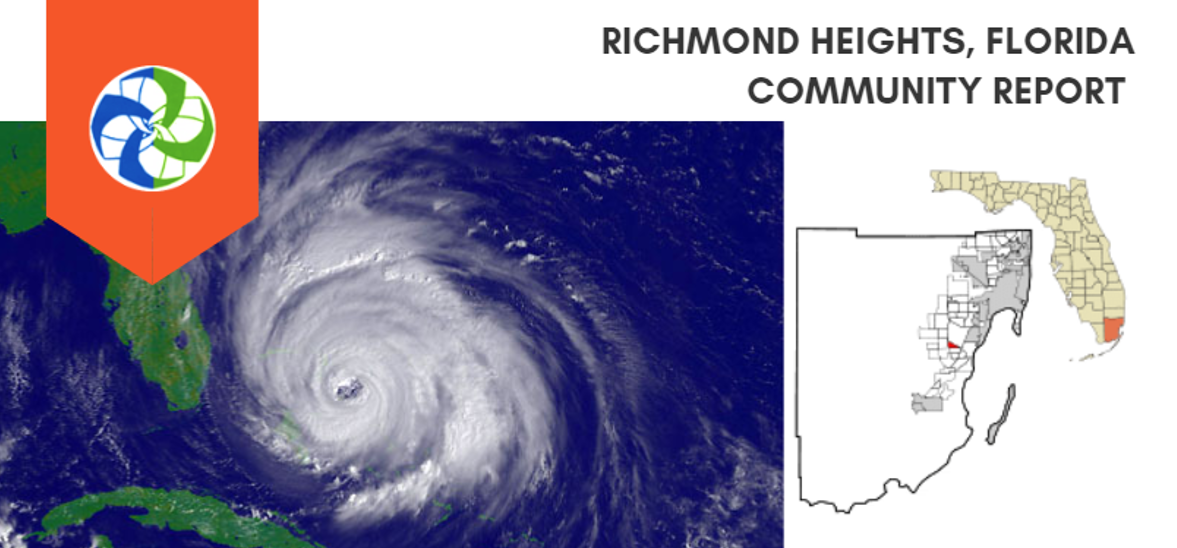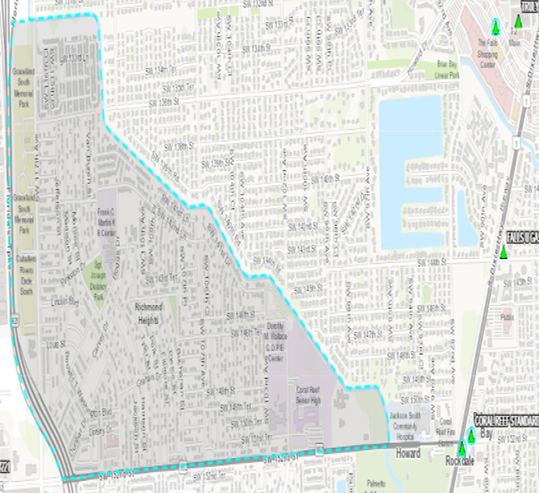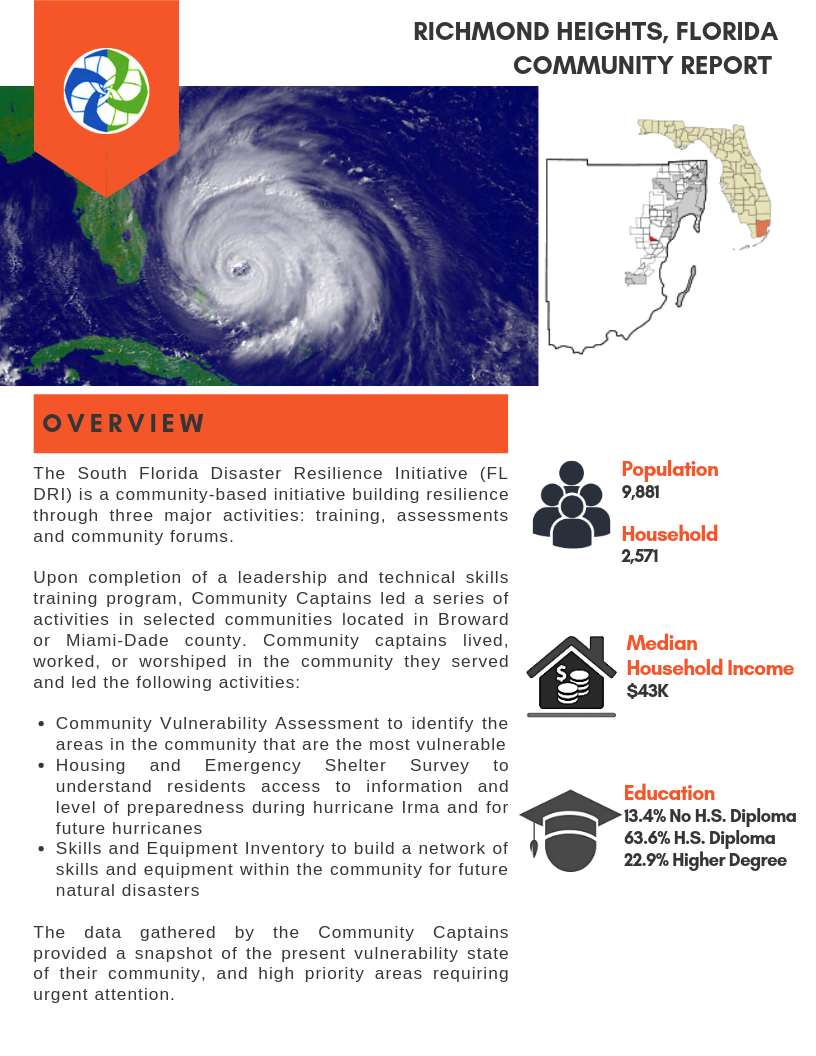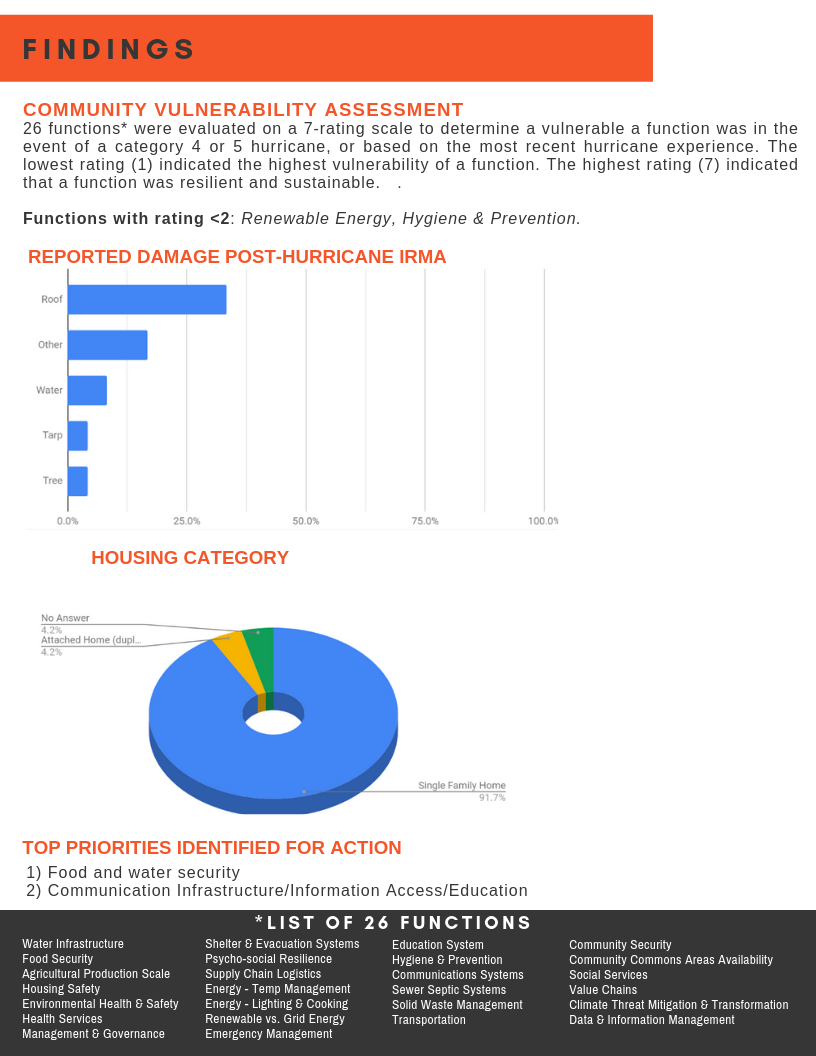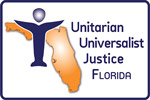Demographics
Population
Households
Median Income in Dollars
%
Percent of Population Without High School Diploma
%
Percent of Population with High School Diploma
%
Percent of Population with Higher Degree
Housing and Emergency Shelter after Hurricane Irma
- Damage by Type Roof Damage 33.3%
- Water Damage 8%
- Tree Damage 4%
- Tarp on Roof 4%
- Source of Repair Funds Home Insurance 60%
- FEMA 40%
- Survey Respondents’ Housing Type Single Family Home 91.67%
- Attached Home 4%
%
Percent Who Had Sufficient Information in the Last Hurricance/Disaster to Make Appropriate Decision
%
Percent Who Had Sufficient Information in the Last Hurricance/Disaster to Make Appropriate Decision About Evacuation
%
Percent Who Were Able to Get Supplies Needed to Shelter in Place
%
Percent Who Knew Location of Nearest Emergency Shelter, How to Get There, and What to Take With Them
Vulnerability Assessment Survey
Respondents ranked 26 different functions that are critical for a society to function. The rankings were from 1, which was “Most Vulnerable.” to 7, which was “Resilient and Sustainable.”
The 5 societal functions to the right had the lowest rankings, which appear in parentheses next to the function description.
- Top 5 Priority Gaps Identified Renewable vs. Grid Energy (1.79)
- Hygiene & Prevention (1.96)
- Climate Threat Mitigation & Transformation (2.29)
- Energy for Temperature Management (2.33)
- Data & Information Management (2.50)
Identified Hazards in Miami-Dade County
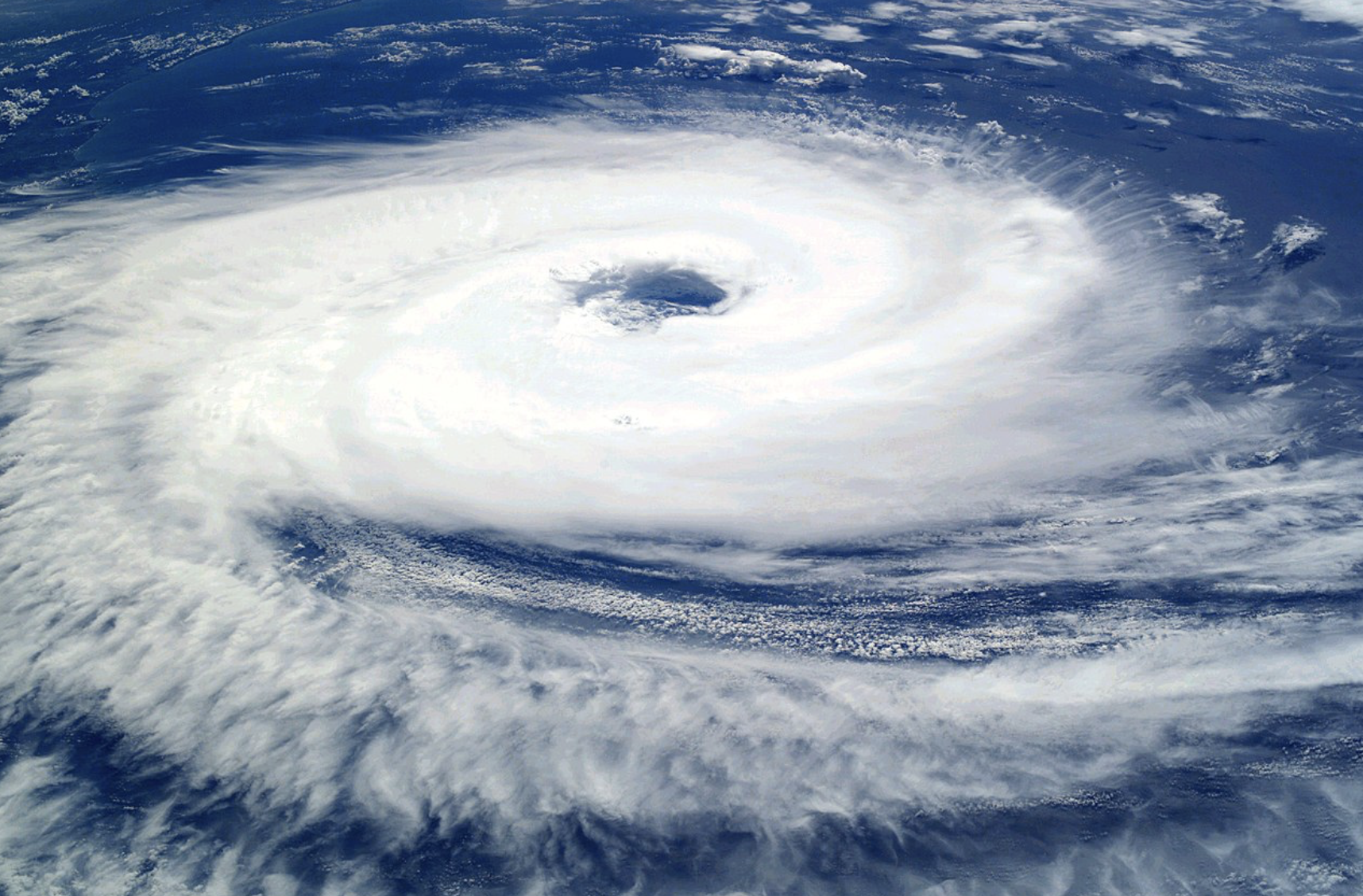
Hurricane or Tropical Storm
Miami-Dade County has a 16% chance of a tropical cyclone in any given year.
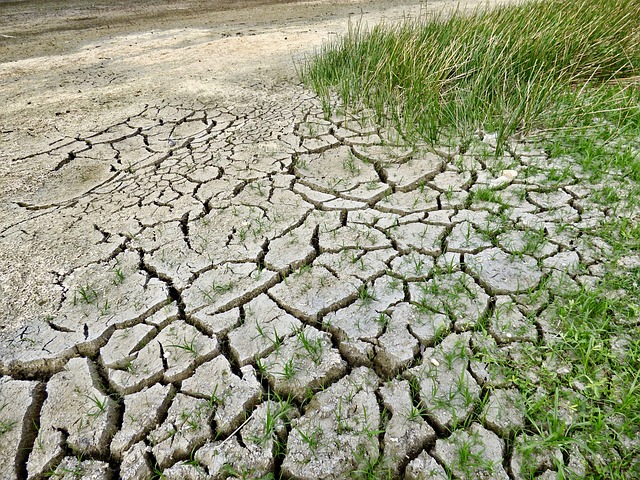
Drought
Miami Dade County has a 71% chance of drought in any given year. There were 48 droughts between 1950 and 2017.
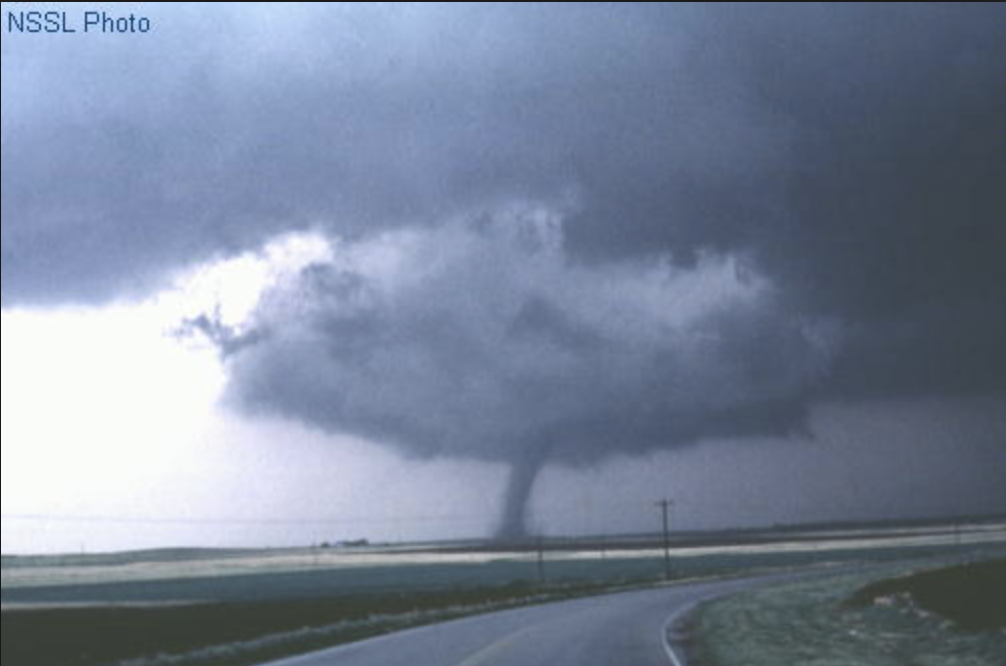
Tornadoes
There were 136 tornadoes in Miami Dade County from 1950 to 2017.
Florida Dept. of Environmental Protection Contamination Locator Map
Search for Superfund and Brownfield sites, Active and Pending Petroleum Cleanup sites and Other Contamination Cleanup sites on the Florida Department of Environmental Protection Contamination Locator Map. You can search by Address, Zip Code or City. You can print the information about contaminated sites, or click through to all the documents relevant to the site since it was identified as a contamination site.
Click on the map to the left to enlarge it. The yellow triangle shows the location of an “Other Waste Cleanup Site” in Allapattah. Details are available by map search.
Frequently Asked Questions
What were the top vulnerabilities identified in the Mission Critical Functions Surveys?
- Renewable vs. Grid Energy
- Hygiene & Prevention
- Climate Threat Mitigation& Transformation
- Energy for Temperature Management
- Data & Information Management
What were the top concerns discussed at the Community Forum?
- Food and water security
- Communications and access to information
What are the community's proposed solutions for priority concerns and the resources needed to address them?
1. Having enough food and water beforehand in stores and resilience hubs
2. Better coordination between the government and the community
3. Establish a network of volunteers, including student volunteers, to participate in activities related to supply distribution and information dissemination
4. Secure startup funding of $25K to stock supplies like generators, grills, packs of water, non-perishable items, large refrigerators and freezers, radios, flashlights for theSouth Dade region
5. Work with community champions, including Cameo Parrish, Dee Hudson, Philip Murray
Florida Disaster Resilience Initiative Summary Report: Allapattah
Contact Janice T. Booher, MS at JJLBooher@comcast.net or Joanne Perodin, MPH at Joanne.Perodin@gmail.com with questions.




This website is maintained by Unitarian Universalist Justice Florida’s Climate Resilience Ministry. It was established by the Green Sanctuary Committee of the Unitarian Universalist Fellowship of Boca Raton under EPA Grant #EQ-00D35415-0. Surveys discussed on this page were conducted under the auspices of Health Initiatives Foundation, Inc.’s Florida Disaster Resilience Initiative with funding from The Miami Foundation.
Website designed and maintained by Janice T. Booher, M.S.

